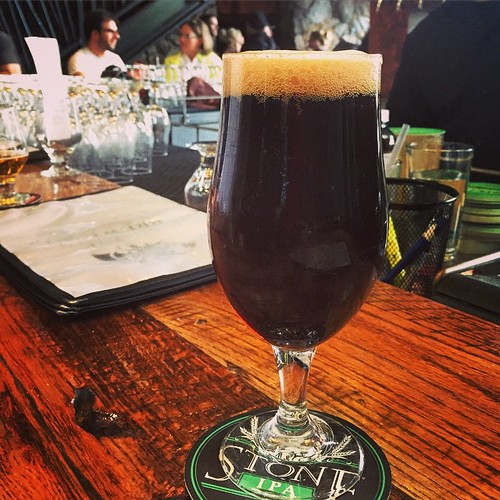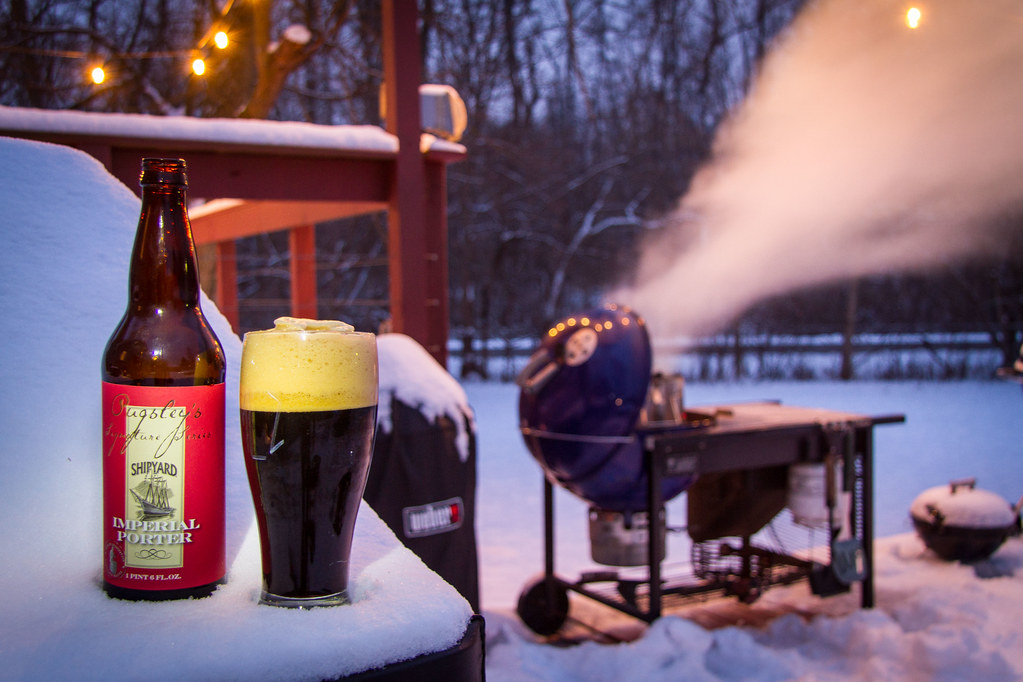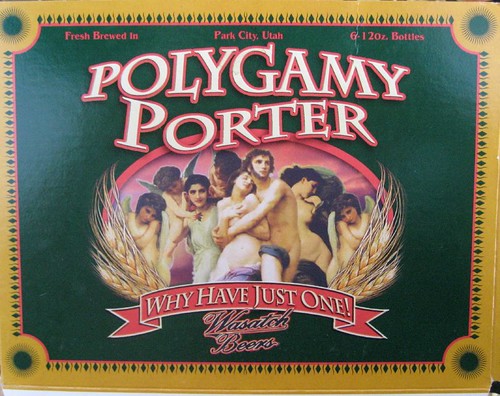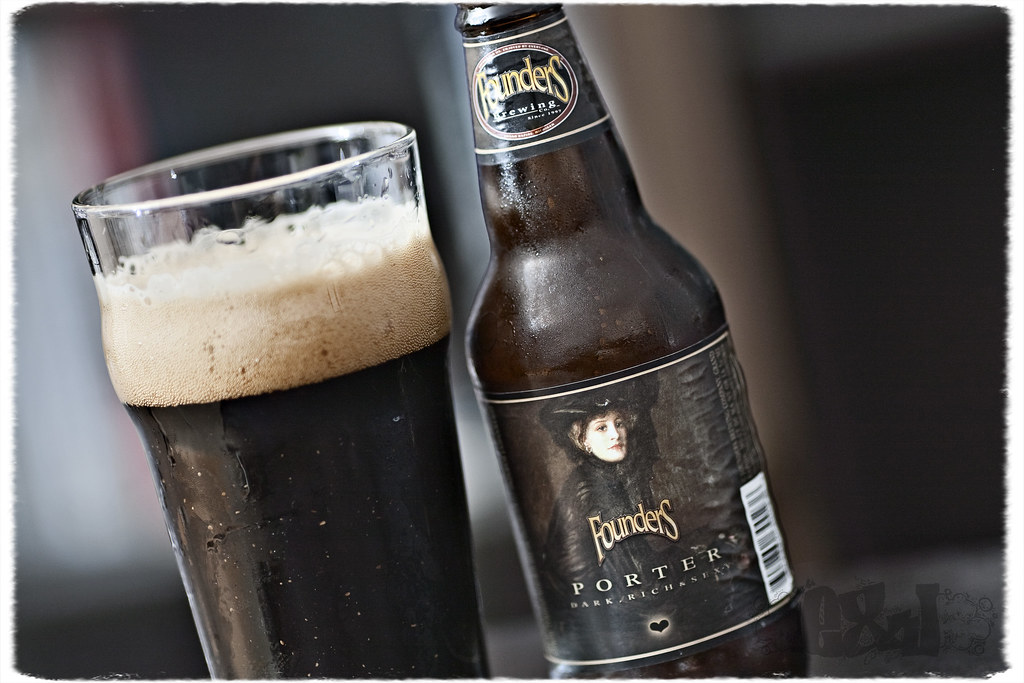Imagine stepping into a dimly lit, cozy pub on a chilly evening, with the inviting scent of roasted malt filling the air. As you settle into a worn leather chair, you can’t help but wonder about the story behind the dark beer in your hand – the porter. This article takes you on a journey into the history and revival of porters, shedding light on how this once-popular working man’s ale has made a triumphant comeback in the craft beer scene. With a friendly tone and an intriguing perspective, you’ll learn about the deep roots of this brew and why it continues to capture the hearts and taste buds of beer enthusiasts today.
History of Porters
Origins of Porters
The origins of porters can be traced back to 18th-century London, where it quickly gained popularity among the working class. The name “porter” is derived from the fact that this style of beer was often favored by porters and other laborers who found solace in its hearty and robust flavors. It is believed that porters were initially created by blending different kinds of beers, including brown ale and pale ale, to create a unique and satisfying brew.
Porters in the Industrial Revolution
During the Industrial Revolution in the 19th century, porters became even more prevalent in society. With the rise of factories and the increase in manual labor, the demand for a refreshing and nourishing beverage like porter soared. Porters were seen as an essential source of sustenance for workers, as it provided them with much-needed calories and hydration during long and grueling workdays. Its popularity spread beyond London, and soon, porters could be found in various industrial cities across England.
Decline and Rebirth of Porters
While porters enjoyed immense popularity during the 18th and 19th centuries, they eventually fell out of favor in the early 20th century. The rise of lighter, more delicate beer styles, such as lagers, led to a decline in demand for porters. Additionally, the devastation caused by World War I and World War II further contributed to the decline as resources became scarce. However, in recent decades, there has been a resurgence of interest in traditional beer styles, with porters reclaiming their place in the craft beer revolution.
Characteristics of Porters
Appearance
Porters are known for their dark and opaque appearance. They typically pour a deep brown or black color, often resembling rich, roasted coffee or dark chocolate. The head of a porter is usually thick and creamy, with a tan or light brown color.
Aroma
The aroma of a porter is complex, offering a wide range of scents that can vary depending on the specific style. Common aromas in a porter include roasted malts, coffee, chocolate, caramel, and sometimes even hints of smokiness. These aromas combine to create a rich and enticing fragrance that invites you into each sip.
Flavor
The flavor profile of a porter is characterized by its balance between malt sweetness and roasted bitterness. The maltiness brings forth flavors of chocolate, toffee, caramel, and sometimes even dark fruits, while the roasted bitterness adds a depth and complexity to the beer. Some porters may also exhibit hints of coffee, nuts, or even a touch of smokiness, giving each sip a delightful complexity.
Mouthfeel
Porters typically have a medium to full body, giving them a smooth and velvety mouthfeel. The carbonation is generally moderate, providing a gentle effervescence that complements the richness of the beer. The finish is often dry, leaving you with a lingering warmth and satisfaction.
Ingredients Used in Porters
Malt
Malt is one of the key ingredients in porter brewing. Typically, a combination of different malt grains is used to achieve the desired flavors and colors. Commonly used malts include pale malt, chocolate malt, roasted barley, and black malt. These malts impart the characteristic roasted and caramel flavors that define porters.
Hops
Hops are used in porters not only for their bittering properties but also for adding a floral or spicy aroma. The hop varieties chosen for porters are often on the milder side to maintain a balanced profile and not overpower the malt flavors. Some popular hop varieties used in porters include Fuggle, East Kent Goldings, and Cascade.
Yeast
Yeast plays a crucial role in the fermentation process and contributes to the overall flavors and aromas of the porter. Different strains of yeast can be used, each offering unique characteristics. Some yeast strains produce fruity esters, while others emphasize the malt flavors. The choice of yeast can greatly influence the final flavor profile of the porter.
Additional Flavorings
While traditional porters rely primarily on malt, hops, and yeast for their flavors, modern interpretations often experiment with additional flavorings. These can include ingredients such as coffee, vanilla, spices, or even fruits. These additional flavorings can add complexity and uniqueness to the porter, appealing to a wider range of palates.
Traditional Porters
London Porter
London Porter is one of the most well-known traditional porter styles. It originated in the bustling streets of London and was popularized by its easy-drinking nature. London Porters typically have a balanced maltiness with notes of chocolate and toffee. They are smooth and moderate in strength, making them a delightful choice for those seeking a classic and approachable porter.
Baltic Porter
Baltic Porters, as the name suggests, originated in the Baltic region. They are known for their robustness and higher alcohol content compared to other porter styles. Baltic Porters often exhibit rich flavors of roasted malt, dark fruits, and even a hint of sweetness. Despite their strength, they maintain a smooth and velvety mouthfeel, making them a delightful sipping beer.
Robust Porter
Robust Porters are characterized by their intense flavors and deeper roasted malt profiles. Unlike the more restrained London Porter, Robust Porters bring forth bold notes of dark chocolate, coffee, and sometimes even a touch of smoke. They have a more pronounced bitterness and a fuller body, offering a hearty and satisfying drinking experience.
Brown Porter
Brown Porters, sometimes referred to as English Brown Porters, are known for their moderate strength and balanced flavors. They exhibit a pleasant blend of roasted malt, caramel sweetness, and nuttiness. Brown Porters are often characterized by their lighter body and lower alcohol content, making them a great option for those seeking a more sessionable porter.
Modern Interpretations of Porters
American Porter
American Porters are a departure from their traditional British counterparts. They often feature a greater emphasis on hop flavors and aromas, resulting in a more pronounced bitterness. American Porters can showcase a wide range of flavors, from robust coffee and chocolate to citrusy and piney hop notes. They tend to have a medium to full body with a dry finish, offering a bold and hop-forward experience.
English Porter
English Porters stay true to their roots, offering a balanced and nuanced flavor profile. They feature a mixture of roasted malt and caramel sweetness, with a restrained hop character. English Porters are often smooth and moderate in strength, providing a classic and easy-drinking experience reminiscent of the traditional porters that originated in the UK.
Irish Porter
Irish Porters, also known as Stout Porters, bridge the gap between porters and stouts. They often exhibit characteristics of both styles, with a focus on roasted malt flavors and a dry finish. Irish Porters can range from moderate to full-bodied, and their flavors can vary from subtle hints of chocolate and coffee to more pronounced bitterness and dark fruit notes.
Experimental Porters
With the craft beer movement pushing the boundaries of traditional brewing, experimental porters have emerged as a way for brewers to showcase their creativity. These porters may incorporate unique ingredients, such as spices, fruits, barrel aging, or unconventional malt varieties. Experimental porters offer a chance to experience new and innovative flavors while building upon the foundation of the classic style.
Craft Brewing and the Resurgence of Porters
Craft Beer Movement
The craft beer movement of the late 20th century has played a significant role in the resurgence of porters. Craft breweries, with their focus on quality and innovation, have reintroduced the world to the rich history and flavors of porters. They have embraced traditional brewing techniques while also pushing the boundaries with modern interpretations and experimental flavors.
Popularity of Porters
Porters have experienced a surge in popularity among beer enthusiasts due to their versatility and wide range of flavors. With their robust and complex profiles, porters offer a delightful drinking experience for both casual beer drinkers and seasoned connoisseurs. Their ability to pair well with a variety of foods further adds to their appeal, making them a go-to choice for many beer lovers.
Innovation in Porter Brewing
Craft breweries have brought innovation to the world of porter brewing by experimenting with different ingredients and techniques. This has led to the creation of unique flavor profiles and novel interpretations of the traditional porter. Brewers are incorporating bold flavors like chili peppers, coconut, and even peanut butter, expanding the possibilities for the style and challenging the notion of what a porter can be.
Food Pairings with Porters
Cheeses
Porters pair exceptionally well with a variety of cheeses due to their complex flavors and robust profiles. Aged cheddar, gouda, blue cheese, and even creamy brie all complement the maltiness and often provide a pleasant contrast. The richness of the cheese enhances the caramel and roasted flavors of the porter, creating a harmonious combination.
Grilled Meats
The smoky and charred flavors of grilled meats, such as steak, burgers, and sausages, perfectly complement the roasted bitterness of a porter. The beer’s maltiness can also help to balance out the richness of the meat, providing a satisfying and flavorful pairing that is both hearty and delicious.
Chocolate and Desserts
The deep, dark flavors of chocolate and desserts are a natural match for porters. The roasted malt and chocolate notes in the beer harmonize with the sweetness of chocolates and desserts like brownies, chocolate cake, or even tiramisu. The combination creates a decadent and indulgent experience that will satisfy any sweet tooth.
Roasted Vegetables
Roasted vegetables, particularly those with earthy flavors like mushrooms, eggplant, and root vegetables, are fantastic partners for porters. The beer’s roasted and caramel flavors complement the depth of the vegetables, while the bitterness of the porter cuts through any richness or sweetness, resulting in a balanced and flavorful pairing.
Porters in the Global Market
Regional Variations
As porters became popular across the world, regional variations emerged, each adding its own unique twist to the style. From the robust Baltic Porters of Northern Europe to the milder and more restrained American Porters, each region has contributed to the diversity of porter styles.
Porters in Europe
In Europe, porters continue to hold a significant place in the beer industry. The United Kingdom, birthplace of the porter, boasts a wide range of traditional and modern interpretations of the style. The Baltic countries such as Estonia and Lithuania have embraced Baltic Porters as a beloved and distinctive part of their brewing heritage.
Porters in North America
The craft beer revolution in North America has revitalized the popularity of porters. American breweries have gained recognition for their innovative and bold interpretations of the style, with a focus on unique flavor combinations and experimentation. The American Porter has become a staple in many craft beer lineups, appealing to a broad range of beer enthusiasts.
Porters in Asia Pacific
In recent years, the craft beer scene in Asia Pacific has seen a growing interest in porters. Breweries in countries like Japan, Australia, and New Zealand have embraced the style, offering their own interpretations that often draw inspiration from both traditional and modern brewing practices. Asian Pacific porters often showcase delicate balance and harmonious flavors, reflective of the region’s diverse culinary heritage.
The Future of Porters
Continued Growth and Innovation
The future of porters looks bright, with continued growth and innovation on the horizon. Craft breweries will continue pushing the boundaries, experimenting with new ingredients and techniques to create exciting and unique porter styles. The popularity of porters among beer enthusiasts ensures a dedicated market that will support the growth and evolution of the style.
Porters in Emerging Markets
As craft beer continues to gain popularity in emerging markets around the world, porters will likely find a foothold in these regions. The rich history and versatility of the style will appeal to beer drinkers looking for something different and unique. Emerging breweries will have the opportunity to showcase their own interpretations of porters, adding to the diversity and global reach of the style.
Styles and Flavors to Watch
While traditional porters will always have a special place in the world of beer, the emergence of experimental porters has opened up a world of possibilities. Look out for future styles and flavors that incorporate unconventional ingredients or brewing techniques. From dessert-inspired porters to barrel-aged variations, the future holds exciting prospects for porters.
Sustainability in Porter Brewing
As the global focus on sustainability and environmental consciousness grows, the brewing industry, including porter brewing, is also taking steps to reduce its carbon footprint. Breweries are investing in renewable energy sources, exploring water conservation methods, and implementing environmentally friendly practices. Sustainability will continue to be at the forefront of porter brewing as brewers strive to create a product that aligns with consumers’ values.
Conclusion
Porters have come a long way since their origins as the working man’s ale in 18th-century London. With their rich history, complex flavors, and versatility, porters have experienced a resurgence in the craft beer revolution. From traditional styles like London and Baltic porters to modern interpretations and experimental variations, porters offer something for every beer lover. As the global market for porters expands, the future holds continued growth, innovation, and exciting possibilities for this beloved beer style. So pour yourself a glass and raise it in celebration of the enduring legacy of the porter. Cheers!
© 2023 by brewandbeyond.com. All rights reserved. No part of this document may be reproduced or transmitted in any form or by any means, electronic, mechanical, photocopying, recording, or otherwise, without prior written permission of brewandbeyond.com.





